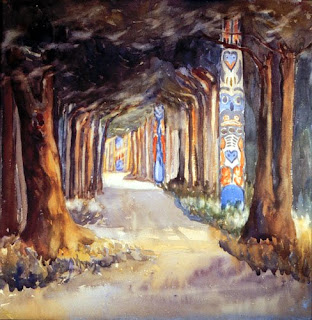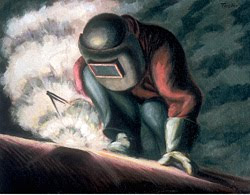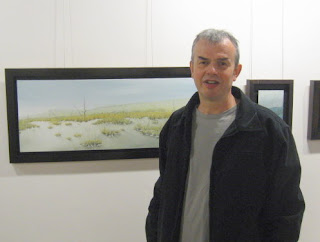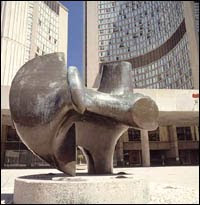
Article by: Ramon Gonzales
Staff Reporter,
Colville Lake, N.W.T.
Over the past 57 years as a missionary in the Canadian North, Bern Will Brown, 87, has encountered many interesting people. He kept copious notes of their stories and now he has released a book - Free Spirits: Portraits from the North - filled with a series of fascinating tales about murder and revenge, adventure and misadventure, faith and love.
These lively tales - by turns tragic, humorous and heart-warming - involve some of the most unforgettable characters Brown met or heard about over the years, including priests and trappers, dreamers and rascals, sailors and traders, artists and adventurers.
"I think Free Spirits will preserve the names and the lives of some interesting people in the western Arctic who otherwise would be forgotten," Brown said Nov. 1 from his home in Colville Lake.
The former Oblate priest got the stories by talking with these characters. In most cases he made notes of his interactions after he got home. "Their stories are part of our Canadian history and offer a glimpse of life in this remote and rugged area of our land, the far North," he said.
Axe murders
Free Spirits, published by Novalis, is Brown's third book. Novalis published his two-volume Arctic Journal in 1999.
Free Spirits, 146 pages, contains 22 tales beginning with Murder Most Foul, which recounts the axe murders of Oblate Brother Alexis Renard and Genevieve Duquette, a young orphan, at the hands of their guide and helper Louis Lafrance, a violent-tempered half-breed Iroquois.
"I don't trap anymore but I still hunt the caribou."
The party was travelling from Fort Chipewyan to Lac la Biche in 1875 to pick up three Grey Nuns. From the beginning, friction built between the brother and his guide over the 14-year-old orphan, who planned to stay with the Grey Nuns in Lac la Biche. The party never made it to Lac la Biche.
Evidence showed Lafrance had killed Renard with his axe and then cut and dried strips of the Oblate's flesh like one would do with buffalo meat. Duquette suffered a similar fate.
Brown, a successful painter, pilot and author, is as fascinating as the characters he writes about. He was born in Rochester, N.Y., in 1920. From a young age, adventure and the North fascinated him. After being ordained an Oblate priest in 1948, he was sent to the frigid Canadian North. His brother Thomas also joined the Oblates because he wanted to live in the Canadian North. He ended up in the tropics of Brazil instead and is still there.
Mission work
Brown began his mission work at Fort Norman, where he learned French, the language of the Oblates, and Hareskin, the language of the people of the North.
"After his apprenticeship, Brown was assigned to Fort Franklin, where he showed his gift for carpentry by constructing a new mission building," recounts editor Frederick Miller in the book's foreword. "This was the first of many missions and churches Brown would build in the North."
He helped build others at Camsell Portage, Uranium City, Nahanni Butte and Colville Lake, where he still lives with his wife Margaret.
"I'm considered a lay leader because I got permission from the Vatican to get married in 1971 but I'm still taking care of the church here."
"Their stories
. . . offer a glimpse of life in this remote and rugged area of our land, the far North."
When Brown moved to Colville Lake, there was only one family left in the village. After he built his log house in 1962, Aboriginal people started to come back and "now we have a population of 130 people." Eventually he built a church, a nursing station, a museum and a library with some 700 books on the North. In the museum he keeps some of his paintings - mostly scenes of the North.
Monthly newspaper
Brown served all over the North and wherever he was he made his mark. While serving in Aklavik, the most northerly community on the Mackenzie River, he started a monthly newspaper - The Aklavik Journal - where he published news from the RCMP, advice from the doctor, the doings of council, weather information and challenging editorials.
"Everyone had to have a copy of this exciting monthly newspaper," recounts Miller. "It was even quoted in Parliament."
Brown survived the cruel and unforgiving North because he adapted "and became an Eskimo with the Eskimos (and) an Indian with the Indians," noted Miller. "All the while he drew enormous strength from his faith, bringing Christ in his person to the ends of the earth."
Clerical celibacy
After the Second Vatican Council the Church of the North began questioning the discipline of clerical celibacy, a concept foreign to native people, who, according to Miller, regarded unmarried men as less than men. Eventually the Canadian bishops also petitioned Rome for a married clergy for the North.
Brown did the same, hoping he would be allowed to continue to minister as a priest once he was married. It would not happen. At age 51 he and Margaret Steen, who is part Inuit, exchanged their marriage vows before Bishop Paul Piche.
"The bishop allowed me to stay at my mission but I no longer say Mass here; we have a priest stationed in Norman Wells coming in here to say Mass," Brown said. "But I am the resident priest here and I'm available for services at the church. I do Baptisms, weddings and funerals."
He is expecting a visit from retiring Bishop Denis Croteau and his successor Bishop Murray Chatlain on Dec. 14. That will be a big event in Colville Lake, where "everybody is Catholic, including the four local schoolteachers."
Brown stayed in the North because he loves the people and their way of life. "I enjoy working with the people here, especially those who are living off the land trapping and hunting," he said. "I was trapping for a while; I don't trap anymore but I still hunt the caribou."
Fishing lodge
During summers Brown operates his fishing lodge. His customers are mostly old friends who keep coming back. "Last summer, for example, I had nine pilots from Edmonton who flew up here in their own planes. We have a good landing strip here."
In Colville Lake there are no roads. "It's all aircraft here and I sold my aircraft last year. I was flying for 65 years."
So how do the Browns get around? They have a team of sled dogs, which his wife raises. "Her hobby is raising these malamute sled dogs and she's raised and sold over 300," he noted. "We have nine dogs here that we use regularly."
Extracted from: Western Catholic Reporter,
Issue: November, 12,2007.
Please click here to see the article in their website.Website URL: www.wcr.ab.ca.

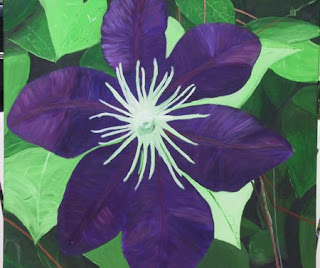 In Full Bloom
In Full Bloom